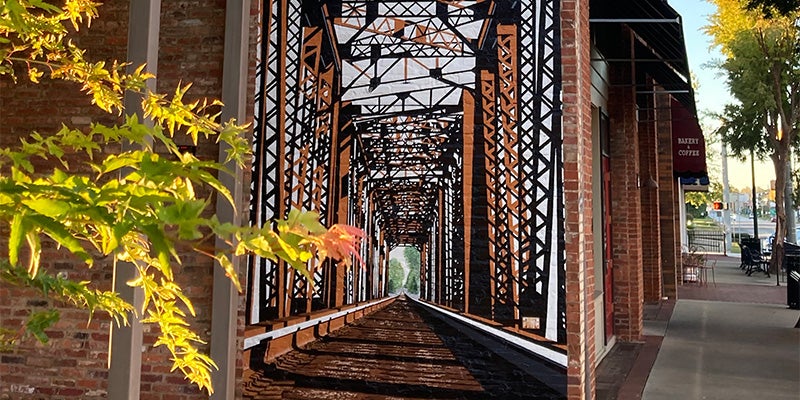Pastor’s viewpoint of the Navajo Reservation
Published 5:15 pm Monday, May 6, 2019
By Charles Whatley
Retired United Methodist pastor serving Woodland & Bold Springs UMC
As you know by now, Mary Ella and I have been going to the Navajo Reservation for 13 years.
In fact, we’re going again in June with our two grandsons — this will be Greyson’s first trip, but Brady went with us a couple of years ago.
We led a Vacation Bible School at White Cone and Brady was in charge of recreation.
In June, we’ll demolish and rebuild the kitchen at Blue Gap, completing a project that doubled the size of their fellowship hall over a couple of years. We’ll also lead a vacation bible school and
I’ll preach on Sunday… and at some point, Mary Ella will shop for their handcrafted turquoise jewelry. Turquoise is a rare and valuable blue-green to brown mineral — it’s a hydrated phosphate of copper and aluminum prized as a gemstone for thousands of years.
In fact, several years ago, the Navajo pastor at Blue Gap gave me a bolo tie with a beautiful turquoise stone set in a silver cross.
Three thousand years ago, both the Egyptians and Chinese valued turquoise.
Two thousand years ago, the Persians created the largest market for turquoise in the world.
They believed turquoise represented heaven and many of their temples have turquoise embedded in the entrance.
But there is a problem…
Ninety percent of the turquoise on the market is actually dyed Howlite, an absorbent white mineral dyed blue-green.
Howlite is a calcium borosilicate hydroxide; it’s a white and porous (easily dyed) gemstone most commonly used to mimic other gemstones… like turquoise. In fact, howlite is sometimes called “white turquoise.” The easiest way to tell the difference is with a scratch test; howlite has a hardness value of three and turquoise has a hardness value of six. So our collection is likely a mix of both turquoise and howlite.
Handcrafted items are as old as the world in which we live; in the past, everything was handcrafted. So it’s no surprise to read in Acts 9, “[36] In Joppa there was a woman named Tabitha, who was a believer. She spent all her time doing good and helping the poor.”
She died and the church sent for Peter, “[39] So Peter got ready and went with them.
When he arrived, he was taken to the room upstairs, where all the widows crowded around him, crying and showing him all the shirts and coats that Dorcas had made while she was alive.”
As many times as I’ve read this story, I’d never noticed “all the shirts and coats that Dorcas had made while she was alive.”
And then I realized, everything the Navajo and Tabitha owned and used 2,000 years ago was handcrafted.
Most of us have lost the art of handcrafting things… quilting, tatting, weaving, sewing, etc.
The Navajo, thankfully, have preserved their ancestral skills; they are famous for their handcrafted turquoise jewelry and beautiful Navajo rugs marked by several loose threads at each of the four corners.



